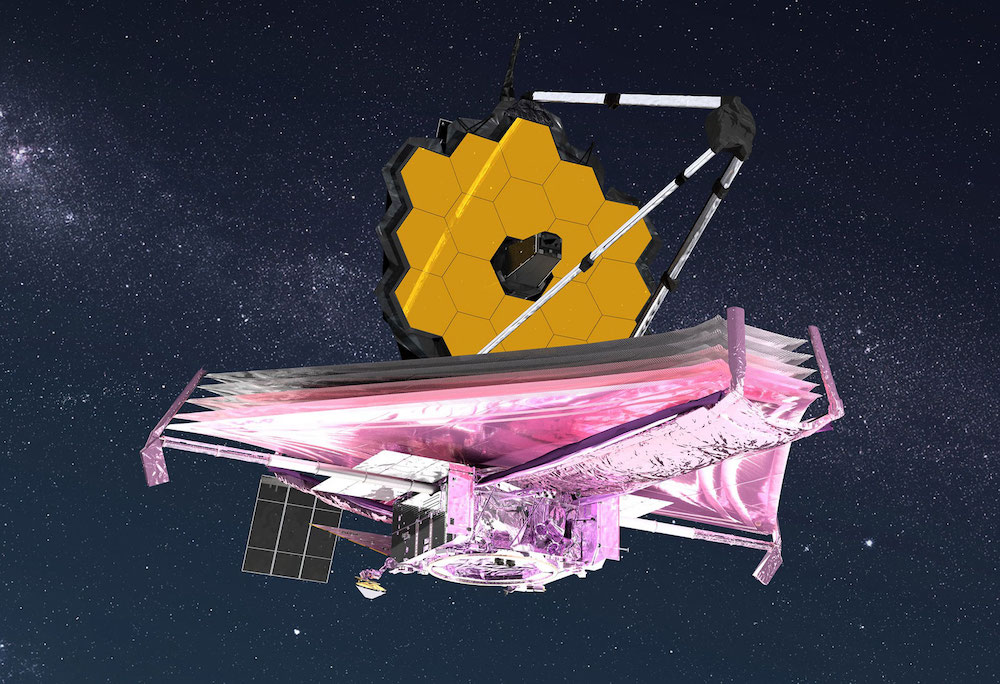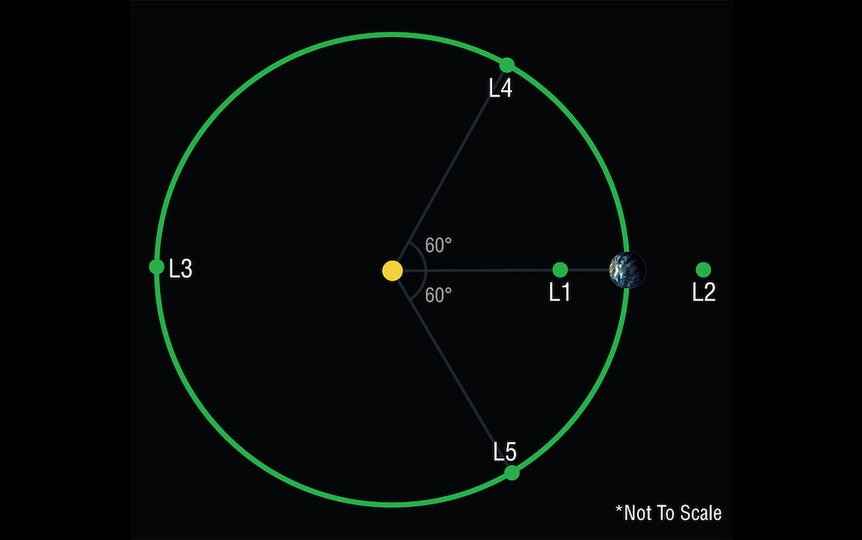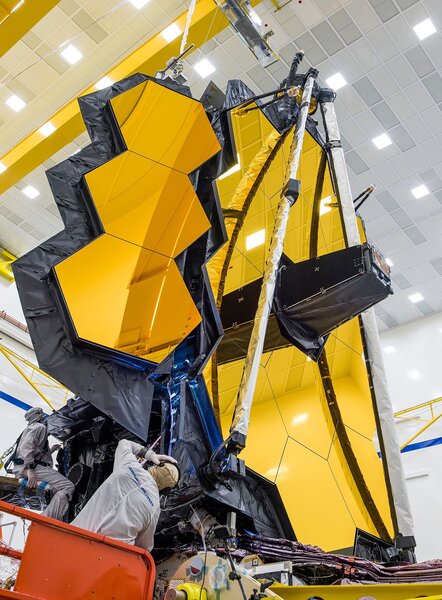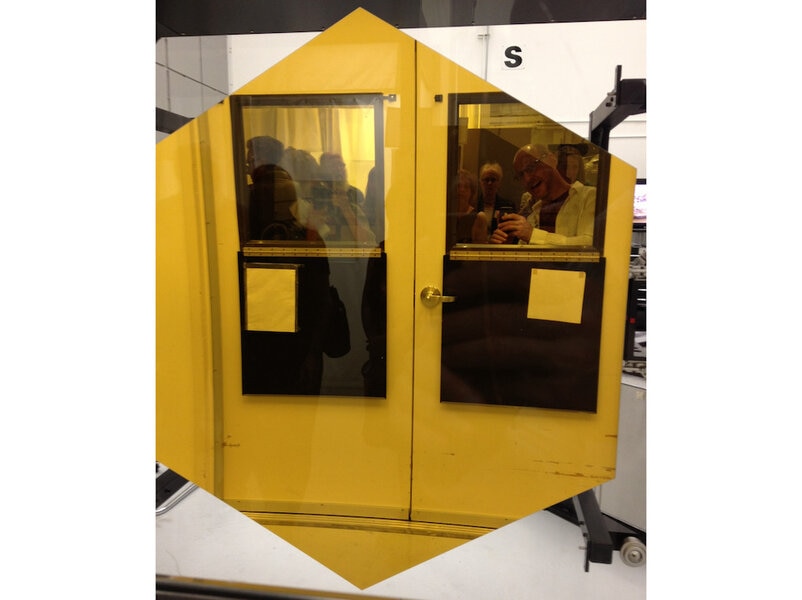Create a free profile to get unlimited access to exclusive videos, sweepstakes, and more!
After decades of anticipation, James Webb Space Telescope launches tomorrow
A space telescope for Christmas… maybe

[UPDATE (Dec. 25, 2021): SUCCESS! The launch of JWST was on time and looks to have been perfect. Shortly after it separated from the rocket, JWST's solar panels deployed and power is flowing to the observatory. Congratulations to Arianespace, NASA, ESA, CSA, and everyone who has given so much to this mission.]
If all goes as planned, and weather cooperates, the massive and very long-awaited James Webb Space Telescope will be launched into space tomorrow morning: Saturday, Dec. 25, at 12:20 UTC (07:20 Eastern US time). The launch window stays open until 12:52 UTC.
NASA will start a live stream of the event at 06:00 Eastern time if you want to watch. The European Space Agency will have one as well. [Note: Weather has been iffy and may continue to be. If the launch is delayed I'll update this post.]
JWST is the most complicated astronomical observatory ever sent into space, optimized to see in infrared light, with wavelengths too long for the human eye to perceive. However this wavelength is key to understanding of the cosmos. It's emitted by star-forming dust in our and other galaxies, reflected and emitted by planets orbiting other stars, absorbed by important molecules in exoplanetary atmospheres (like water vapor) allowing them to be detected, and perhaps most importantly galaxies at the very edge of the observable Universe glow in the infrared, their high-energy ultraviolet light stretched to the longer wavelengths by the expansion of the Universe itself.
And yet this is just a taste of what astronomers anticipate from JWST. Some people refer to it as the replacement for Hubble, but that's not true: It's Hubble's successor and in many ways partner; the two can be used to look at the same objects at the same time but in different wavelength regimes, allowing far more to be learned than through either observatory alone.
It will do for infrared astronomy what Hubble has done for optical light astronomy. Revolutionize it.
But first there is quite the trip to make and a lot of unpacking to do shortly thereafter.
JWST is a joint mission between NASA, the European Space Agency (ESA), and the Canadian Space Agency. It will ride on a mighty ESA Ariane 5 rocket, launched from their spaceport near Kourou, French Guiana (launching closer to the equator gives an extra boost from Earth's rotation, adding nearly 1000 kilometers per hour to its velocity relative to the Earth's center).
It will take approximately four weeks* to reach its destination: The Earth-Sun L2 point, a region of space about 1.5 million kilometers from Earth in the direction away from the Sun where the gravitational and centripetal accelerations balance, so anything put there tends to stay there.
While astronomers, scientists, and engineers around the world are already biting their nails over the launch, it's really those next four weeks that are the crucial and excruciating moments. It will be along the way to L2 that JWST will begin deploying its various components, unfolding like an origami swan flying into space.
Why? Because JWST is huge. The primary mirror is actually made up of 18 1.3-meter hexagonal gold-plated segments and will span 6.5 meters, far too large to put inside a rocket fairing. So engineers designed it to fold up, with 12 mirrors in the middle and two “wings” of three mirrors each that fold behind the stack of 12 to save room. The secondary mirror, which is on a mast in front of the primary mirror and designed to reflect light through a hole in the primary to the instruments behind it, also folds down onto the middle stack.
But that assembly is dwarfed by the Sun shield, a sail made of reflective material to block the Sun's heat. JWST has detectors that look at what we call thermal infrared light, emitted by warm objects. If JWST itself were warmed by the Sun it would be emitting the kind of light it's trying to see from distant, faint astronomical sources! The Sun shield has many layers of material that will keep the observatory cold, only about 50° C above absolute zero (-350° F). The shield is the size of a tennis court, about 20 by 10 meters.
Here's video of the sunshield unfolding in a test by Northrup Grumman in California:
So all this must fold up and fit in the Ariane 5 fairing, which is less than 5 meters in diameter, and then unfold before it gets to L2. This process has been tested as much as possible on Earth, but space is difficult and unforgiving, so the deployment phase will be the one where everyone involved will be getting very little sleep.
Once at L2 it won't start observing immediately, either. It will take about a month to cool down to its operating temperature, and during that time engineers will be turning on some of the systems and giving them a run-through. Cameras will be switched on as well, and that will allow, at six weeks or so after launch, the primary mirror segments to be adjusted. Each individual mirror needs to be aligned perfectly with all the others, and that will hopefully finish up around three months after launch.
There will still be adjustments to make, and finally, again if all goes well, it will begin science observations six months after launch.
So. Patience.
And first things first. JWST has been long delayed, first scheduled for launch in 2007 at a cost of about a billion dollars, but it has suffered numerous setbacks, some of course due to COVID-19 issues but many due to human error issues, cost overruns, and more. It was basically just an idea in 1996 or so, with technology planned that hadn't even been invented yet, but in the years since it has pushed a lot of the advancement in that technology. Despite all the issues with it being designed, built, and tested, it's now ready.
And it sits on a launch pad in South America, fueled up and ready to slip the surly bounds of Earth.
Per valde aspera ad astra.
* CORRECTION! I had a couple of sources say it took two weeks to get to L2, but it's really more like 4. Sorry about that!





























